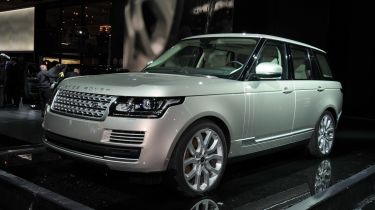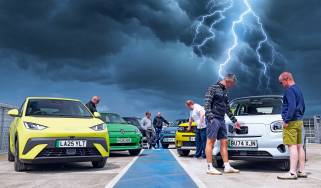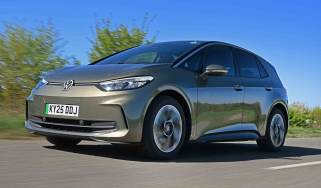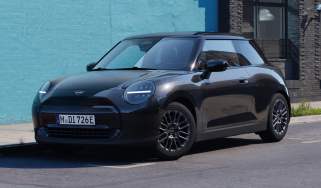Range Rover 4.4 SDV8
Big diesel gives the all-new Rang Rover sports car performance, but is it a better bet than the V6?

The all-new Range Rover is a tremendous car, whichever model you choose: comfy, refined, classy and hugely capable. But the biggest problem the SDV8 model has is that the TDV6 is more appealing. Unless you really want the extra shove in the back 700Nm (versus 600Nm) of torque will give you, we’d go for the cheaper, more nimble V6 version and indulge in a few more options.
Last week, we raved about the all-new Range Rover with its lightweight aluminium body and chassis combined with the smooth and powerful new V6 diesel. The combination of this new engine and a 420kg weight drop means performance of the new V6 model is on a par with the old V8 car. So what happens if you combine the V8 with the lightweight new Rangie?
Wow – that’s what! A 0-60mph time of 6.5 seconds only tells half of the story, as it’s the sheer unabating grunt that gives the Range Rover sports car-baiting performance from whatever speed you’re doing. It’s combined with a beefy growl that’s very un-diesel-like, although most of the time the new Range Rover’s incredible refinement means you’ll hear barely a whisper from under the bonnet.
That said, the V6 is the sweeter engine – there’s a tiny bit of diesel hum from the V8 when you start the engine or sit at the lights, and a tiny bit of vibration through the wheel, too. Put into context, it’s in no way a problem, just that the newer engine is slightly more refined.
Used - available now

2021 Land Rover
Range Rover
30,332 milesAutomaticPetrol2.0L
Cash £39,995
2017 Land Rover
Range Rover
76,100 milesAutomaticDiesel4.4L
Cash £23,995
2020 Land Rover
Range Rover
41,437 milesAutomaticDiesel3.0L
Cash £40,000
2021 Land Rover
Range Rover
46,647 milesAutomaticDiesel3.0L
Cash £41,750We also prefer the way the V6 handles – with less weight over the front wheels, the steering feels slightly more responsive and crisper, while turn-in feels sharper, too. The V8 gets a clever Dynamic Response active lean control system to tidy up the handling, which the V6 does without.
Both models have adaptive air-suspension, though, and we reckon the lighter V6 without the handling gadgetry feels even more agile than the V8. Again, it’s not that the V8 is bad, but the V6 is better.
In total, the 200kg extra weight the V8 carries is quite noticeable. As is the £6,800 premium the bigger engine commands. It’s not only pricier, but also more expensive to run – economy drops from 37.7mpg to a still not unreasonable (for such a large car) 32.5mpg.
The SDV8, like the V6, rides like few other cars. The old car was good, but this new model feels even more settled and composed over pretty much any surface – even some of the toughest terrain you’re ever likely to consider driving across.
The new Terrain Response 2 system will constantly monitor the road ahead and adjust the car’s myriad settings itself, or you can select from five presets, from rock crawl to slippery grass.
Whether you’re on or off road, you’ll be travelling in six-star comfort, with a level of finish and personalisation that’s the match of some considerably more expensive cars. The big, comfy chairs afford a great view out (and a relaxing massage on Autobiography models), while the dash has been decluttered, with many functions being delegated to the improved touchscreen.
It’s not a perfect system, but it does control one of the best in-car audio experiences you’re ever likely to encounter, courtesy of Meridian. Even our test car, with a stereo that hadn’t been properly run in, sounded superb. Space in the back has been improved, and you can choose from a bench for three or two ‘club class’ executive seats.
There are a great many other extras to choose from, including several £6,000 paintwork options, making £100,000-plus Range Rovers a probable sight.




